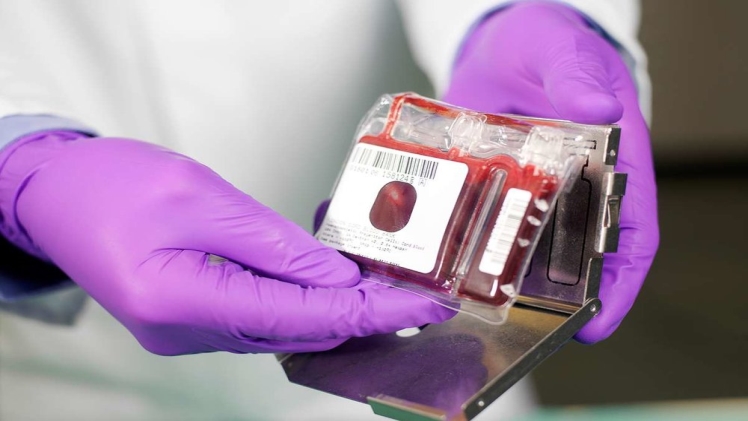You probably have some questions about storing your newborn’s cord blood and how it can benefit your family. Your child will only be a newborn once, so it’s natural to want to know all you can about how you can best care for them in the future. You may be wondering if banking your baby’s umbilical cord blood is the right step for your family—and why it could be beneficial for your child or grandchild. In this blog post, we’ll explore everything you need to know about storing your baby’s stem cells from their umbilical cord after they are born.
What is Cord Blood?
Cord blood is the blood that remains in the umbilical cord and placenta after a baby is born. It’s composed of special cells called stem cells that can be used to treat various diseases. You’ve probably heard of cord blood as a source of stem cells, which are currently being researched and used in therapies to treat a range of diseases. You may have heard the term “biological insurance”, which refers to the fact that you can use your child’s cord blood to treat them if they ever get sick. Cord blood can be privately banked and is often used by people of all ethnicities to treat a range of diseases, including leukemia and anemia. Cord blood is an abundant and renewable source of stem cells that can be used in the treatment of many diseases. It is collected from the umbilical cord of a newborn baby soon after birth. These stem cells have the ability to create new, healthy blood and immune system cells and can be used to treat many diseases of the blood and immune system. Some examples are leukemia and certain genetic diseases, like sickle cell anemia, and cancers like leukemia or certain types of cancer.
Why Store Cord Blood?
Cord blood is rich in stem cells, and those stem cells can be used in the treatment of a host of diseases. And while the blood in your child’s umbilical cord is currently rich in stem cells, the numbers of those cells decrease over time. Also, if you plan to donate the blood in your child’s umbilical cord to a public bank, there are certain genetic and infectious diseases it must be free of. That’s why some parents choose to bank their child’s cord blood. The blood in your child’s umbilical cord can be rich in stem cells. That blood can be frozen and stored for years, and it can be used to treat a variety of diseases and conditions, such as leukemia and sickle cell disease.
How Is Cord Blood Collected?
Collecting cord blood is a completely safe procedure that does not cause your baby any harm or discomfort. Once your doctor has delivered your baby, the umbilical cord is disinfected and cut with a special device called a clipper. The blood from the cord is then collected through a needle, and it is either collected into a bag that can be stored in the refrigerator or frozen in a cryogenic storage container. The blood is later transported to a cord blood bank for storage.
Cord Blood Banking cost
Cord blood banking is not currently covered by most health insurance providers. If you decide to bank your child’s cord blood, you’ll have to pay for the collection and storage yourself. The cost of a private cord blood bank is around $3,000 to $5,000. Since many people do not want to spend that much money, public cord blood banks are available to anyone. These are often state or university-backed banks that provide the service at no cost. If you decide to bank your child’s cord blood through a public bank, you won’t have access to it should you or your child ever need it. However, you can donate your child’s cord blood to a public bank, and it will be used in the treatment of other patients.
Storing Cord Blood for Future Use
Some doctors recommend that you freeze your newborn’s cord blood, especially if your child is in a high-risk group for certain diseases. There are certain diseases for which doctors will recommend banking cord blood. These include, but are not limited to: – Sickle cell anemia – Certain types of cancers, such as leukemia and lymphoma – Inherited metabolic diseases, such as Hunter syndrome and Hurler syndrome – Inherited immunodeficiency diseases, such as severe combined immunodeficiency
Where to Find a Reputable Cord Blood Bank?
Not all cord blood banks are created equal. When choosing a cord blood bank, there are certain things you should look for. First, you’ll want to make sure that the company is an accredited cord blood bank. Accreditation means that the company has been through a rigorous review process and is willing to be audited by the American Association of Blood Banks. Next, you’ll want to make sure that the cord blood bank you choose has a high survival rate for cord blood. A high survival rate means that the bank has a high number of samples that are still viable after being frozen for years. To make your life easier, we’ve gathered a list of the best cord blood banking companies in the country.
Final Words: Are you going to bank your baby’s cord blood?
When you’re expecting your little bundle of joy, you may have heard about cord blood banking. If you’re not sure what it is, don’t worry. Here, we’ve broken everything down for you. We’ve explored what cord blood is, why you might want to store it, and how it’s collected and stored. We’ve also delved into things to know before you decide to bank your baby’s cord blood and where to find a reputable cord blood bank. In the end, the decision is yours. If you want to store your child’s cord blood, all you have to do is decide where you want to do it.

